OEM vs Aftermarket: Are Auto Parts Created Equal?
Being in the aftermarket auto parts business, I often find myself verbally battling with guys that are hardcore OEM (original equipment manufacturer) auto parts only. They'll say “I only buy OEM auto parts because 'aftermarket stuff' never fits, works, lasts, etc.” To support their stance, they'll have an example of a part they bought from a local auto parts store that didn’t work for whatever reason. Fair enough—we’ve all been there.
I have no problem with OEM parts. Before working for 1A Auto, I was a technician at a Cadillac dealer using all OEM parts. I’m quite familiar with a wide range of auto parts. Do bad OEM parts exist? Absolutely! (Just ask anybody that has owned a Cadillac Catera) Do bad aftermarket auto parts exist? Absolutely! However, not all auto parts are created equal, so let’s talk about it.
What Are Aftermarket and OEM Parts?
Before we begin, note that original equipment manufacturer (OEM) parts are the original parts that came on the vehicle, and aftermarket auto parts are parts built to the same specifications as OEM but may not be the same brand as the original parts.
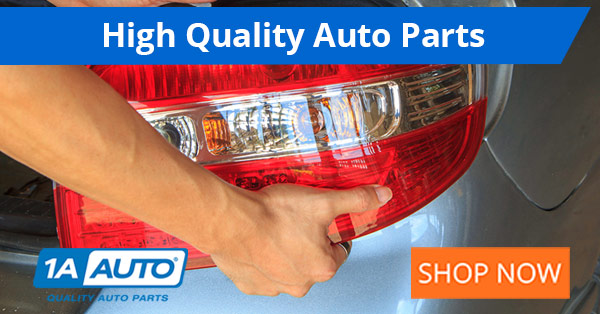
How Aftermarket Parts Can Have Higher or Lower Quality Than OEM
We’ll start with a company that really exists and everybody knows they make fantastic suspension products. I’m leaving the name out because the auto parts they build are more relevant than their name. Let’s call them “Company X.” About 50% of the suspension parts that Company X produces are OEM parts for brand new cars. They also produce extras for car dealers to stock, in an OEM brand name box, but it is built by Company X. When the OEMs need a part produced, Company X is given specs by the vehicle manufacturers and they build these auto parts to the exact specifications they are given. The OEM engineers really only need these parts to last as long as the car’s suspension warranty, without compromising safety or their own brand name in the process. All the parts function as they are designed to, but long term, some parts are better than others.
The other 50% of the auto parts that Company X produces are what I call “high quality aftermarket auto parts.” They are Company X’s aftermarket brand, built to their own specs, which are vastly improved over the OEM parts (if they need to be). They find the faults of the original designs and they correct them for their aftermarket brand because Company X wants them to last forever. Everything is greaseable (as suspension parts should be), and engineered to be better than the OEMs originally wanted. It may be a visible change in the look, or it may look identical and be internally changed. In some cases, the OEM part doesn’t need to be improved upon, and the high quality aftermarket part brand has the same quality as OEM but without the part numbers marked on them.
On the other hand, some cheaper options available out there which I call “low quality aftermarket auto parts” are typically the ones that can give “aftermarket parts” as a whole a bad name. These parts are cheaper to produce, and being the cheapest to produce rarely equals the highest quality. The unfortunate truth to these parts is that you don’t really know if this is the part that you are buying until you attempt to attach it to your car. Before long, you need torches and welders to make it fit, and you need a new one in a few weeks.
How OEM and Aftermarket Part Prices Differ
Now you can’t talk about OEM vs. aftermarket auto parts without mentioning how they're priced. Here’s the way it works: since the average consumer can only buy OEM parts through car dealers, the dealers can charge a premium. There is typically minimal price differences between dealers because there doesn’t need to be—they control the flow of OEM parts.
Aftermarket parts are different because you can have multiple manufacturers of similar products. You can count on all of them being priced less than an OEM part from a dealer, but the quality varies greatly. High quality aftermarket parts are priced less than the dealer, but sold from a variety of different outlets which means competition and a super high quality part at a competitive price. Then there are the cheap (and I mean cheap) low quality aftermarket parts. They will be priced the lowest, and may or may not be what you want when you open the box.
My opinion may appear to biased because of my position, I’ll give it to you anyway: I prefer the high quality aftermarket parts over OEM because I know what goes into them, and the price is right of course.
Want more? Ok, fine. Recently I installed some new ignition coils in my wife’s RX8 as a general maintenance procedure. I took a few pictures for OEM vs aftermarket comparisons. The new ones were perfect in every way, and the RX8 is happier than ever. (OEMs are on the left side of the picture, and the 1A Auto coils are on the right.)
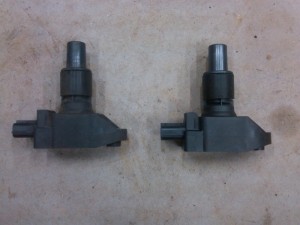
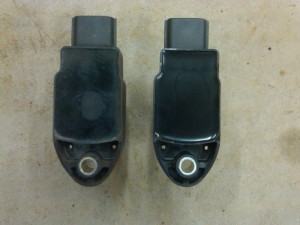
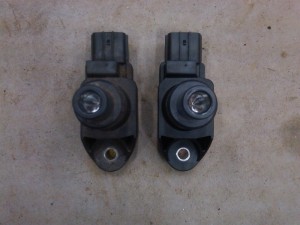
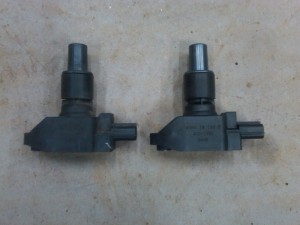
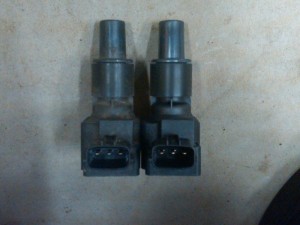
How do you tell a quality aftermarket auto part company from the others? Take a look at what else they have to offer you, including warranties and guarantees, USA based customer service, installation videos, engaging blog articles and other automotive content, etc. If it looks like they care, they probably do.

